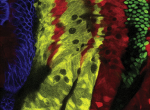Research
Electronic Structure

Electronic structure theory has provided research scientists both in academia and industry with an unprecedented ability to make first principles predictions of a wide range of physical and chemical properties of a diverse range of systems limited solely by the available computational power. Genuine academic research, therefore, now lies beyond the standard application of density functional methods. Our research is to develop new methods with greater accuracy and on novel applications of these methods in physics, biology, chemistry and materials science.
The group's focus is on understanding the behaviour of solids and liquids using quantum mechanics without fitting to experimental data, so-called "first-principles" methods. We have been involved in developing a number of electronic structure codes: CASINO, CASTEP, ONETEP, OptaDOS, and SIESTA.
Collective Quantum Phenomena

Collective quantum phenomena are the defining feature of condensed matter. Our researches in this area are bound together by using common tools - especially field theoretic methods - to address different physical problems. These include the development of ordered quantum states, for example quantum Hall systems, superconductivity and magnetism in strongly correlated metals, Bose-Einstein condensation of dilute gases and of excitons in semiconductors, and quantum critical phenomena in general. Much of our work is motivated by experiment and often in direct collaboration with experimental groups.
Biological and Soft Matter

Biological and soft matter physics encompasses a broad range of phenomena where the temperature, time or length scales involved are such that quantum effects can be safely neglected. Our research topics include constrained models (dimer and colouring models, kinetically constrained models); disordered systems (in particular glassy systems); and frustrated magnetic materials. A great deal of modern statistical mechanics is devoted to the understanding of Soft Condensed Matter systems where our research focuses on elastic, hydrodynamical, optical, and material properties on mesoscopic scales. We use statistical mechanics and elasticity theory to model complex solids, in particular liquid crystal elastomers.
The area of biology is inspiring an increasing body of varied interdisciplinary research in the TCM Group. Prof. Payne's research includes the application of the latest DFT techniques to "small" biological molecules containing a few thousand atoms, which is sufficient to model some protein-protein interactions. Prof. Simons has a major interest in stem and progenitor cell fate in both normal tissue and cancers. He pursues this research with many collaborators in several different medical research centres in Cambridge and the USA.
Not all of the research in TCM is directed to the major collaborative programmes described above. Many researchers also have their own personal projects, some of which can be found described on their personal web pages.
TCM is also pleased to collaborate closely with the Biological Physics Sector in the Cavendish, and Theoretical Chemistry, along with many other groups in this University, in this country, and across the world.